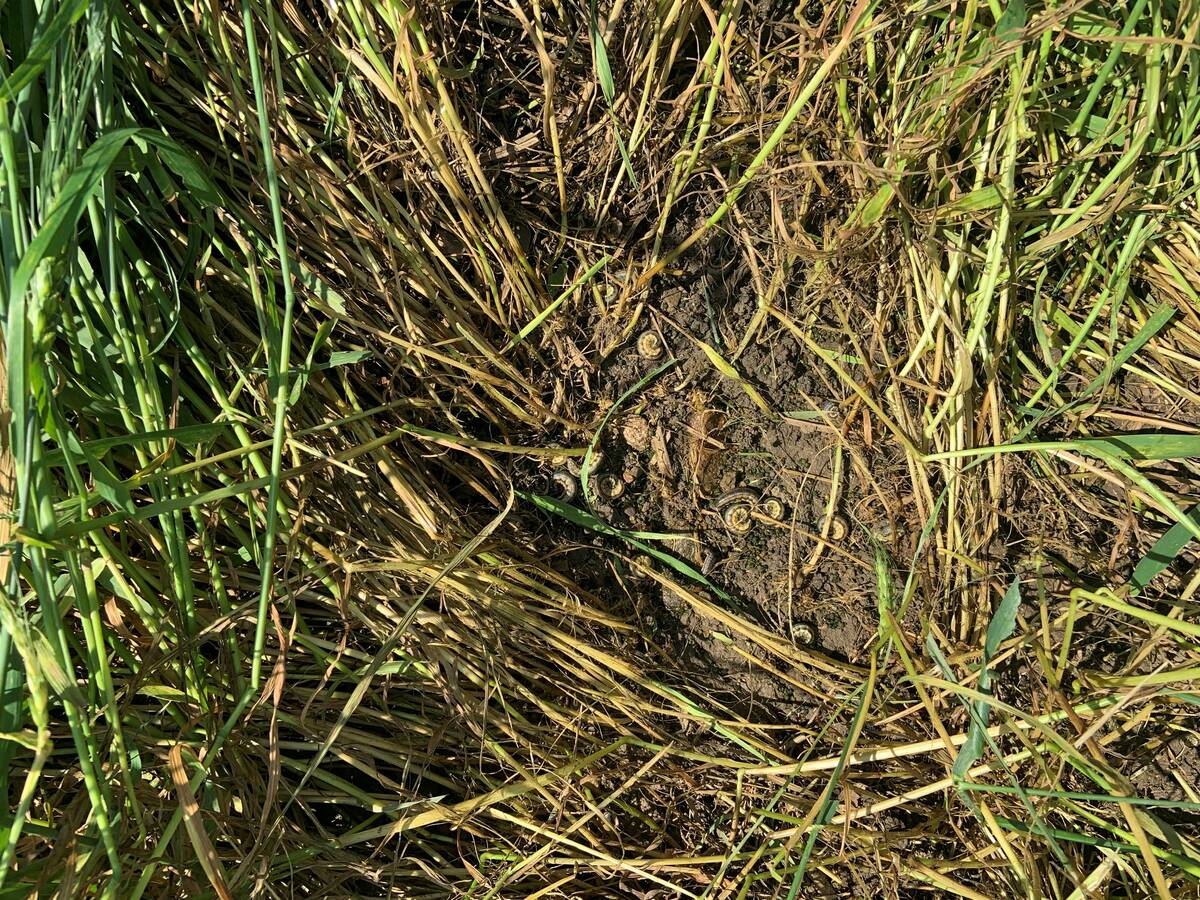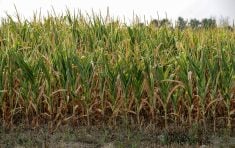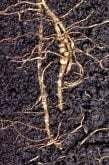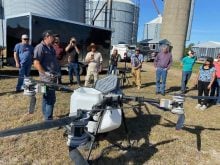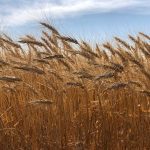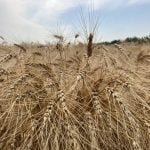The guidance for management of a couple of long-term but sporadic Ontario crop pests is being updated, as pesticide resistance and a changing climate create a need for new knowledge.
Joanna Follings, cereals specialist with the Ministry of Agriculture, Food and Agribusiness (OMAFA), is currently developing new resources for managing true armyworm and cereal leaf beetle.
Why it matters: Cases of true armyworm (TAW) and cereal leaf beetle (CLB) are spreading across Ontario, which have have an impact on crop yields long-term.
Read Also
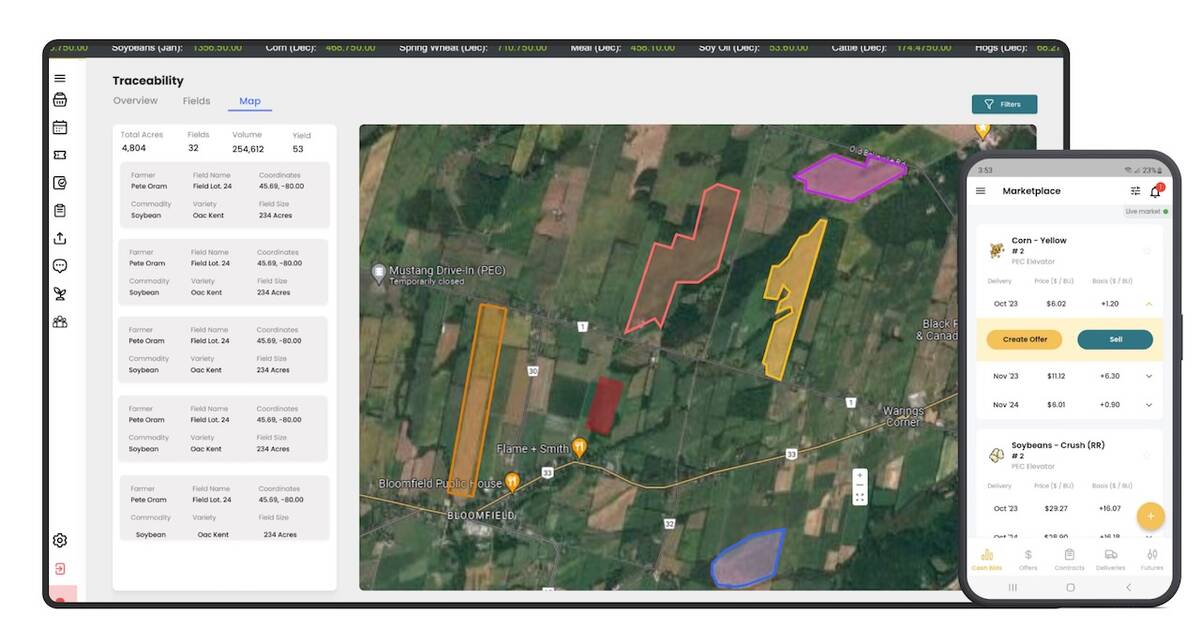
Ontario company Grain Discovery acquired by DTN
Grain Discovery, an Ontario comapny that creates software for the grain value chain, has been acquired by DTN.
True armyworm generally have outbreaks every four to six years in the Great Lakes region following cooler, wet springs. Cereal leaf beetle overwinters in plant debris, reemerging in late May to June. Host plants include cereals, corn, and grassy weeds.
“Both of these pests feed on the leaves of the plant that can interfere with photosynthesis, which can impact yield,” said Follings. “TAW is difficult to predict in terms of whether it will be a problem any given year.”
Outbreak years tend to coincide with cool, wet springs that are detrimental to the parasites that typically control armyworm, but this year was a cooler, wetter spring, and there hasn’t been an outbreak.
Follings said that true armyworm has also been known to feed on the kernels and awns or clip the heads off cereal plants just a few weeks before harvest, though she noted that didn’t occur during the five-year study conducted at the University of Guelph, Ridgetown Campus.
She noted that cereal leaf beetles have several host crops, including wheat, oats, rye, triticale, timothy, corn, barley and some grassy weeds, but they thrive most on wheat, oats and barley.
“Both larvae and adults feed on the leaf surface, chewing long scratches that run parallel with the leaf veins. Leaves become skeletonized or window-paned. Heavy infestations cause the field to look silver and similar to frost damage from a distance,” she said, adding that yield losses in winter wheat of 30 per cent or higher have been reported in both Canada and the United States, with even higher losses reported in spring cereals.
“Most thresholds for both pests were established in the 1980s and may be outdated. Modern varieties may be able to tolerate more feeding by these pests with less impact on yield.”
The most recent true armyworm outbreaks in Ontario occurred in 2008, 2012, and 2020. Follings said that current management practices, including economic thresholds, are based on research and management practices from over 50 years ago and are in need of updating.
“The large masses of larvae found in a field can be alarming,” she says, but recent research from the University of Guelph’s Ridgetown Campus suggests that it is not as concerning as was thought.
Cereal leaf beetle has been reported in various regions of the province for a number of years, but in recent years, Follings added that more growers are finding them at higher populations.
“Previously it was believed that parasitoids that help manage CLB were prevalent in Ontario. However, since the beginning of this study in 2021, fields sampled for CLB have much lower levels of parasitism than previously thought,” she said.
“Two new parasitoids have been found, but at low levels. More research is required to better understand why some fields have a higher frequency of CLB infestations and gain an understanding of why there is such low parasitism.”
Follings said OMAFA has not found true armyworm at concerning levels since the last outbreak in 2020.
“This is a sporadic pest, but moths have been found in traps and larvae in fields in the most southern part of the province. This is likely due to how and when the storm fronts come through Ontario from the U.S. If there are lower levels of armyworm moths in the US, then it is expected that lower levels would be found here,” she said.
Cereal leaf beetle has been found at higher frequency in Dresden, Bolton, Stayner, Seaforth, and Clinton, with more recently Petrolia, West Montrose, and Elora. She said it is not entirely clear why these areas in particular see this pest year over year, noting that one factor may be that they are areas with consistent cereals in the rotation and, in some cases, spring cereals as well.
She said regular scouting to monitor thresholds is most important when dealing with these insect pests.
“More often than not, the visual damage appears to be worse than the economic damage or yield loss. There are natural enemies that can help maintain pest populations. Many growers are trying to avoid having to spray if possible so that the natural enemies can be maintained for pests in other crops such as corn and soybean,” she said, adding that farmers can find additional resources on insecticides that are registered to control these pests through the Ontario Crop Protection Hub.
Follings said that updated thresholds that reflect her team’s latest findings on these pests and the current cereal varieties tolerance to injury will be provided in the coming months. Her team also provides weekly true armyworm and cereal leaf beetle counts across the province through the Great Lakes and Maritimes Pest Monitoring Network and Cereal Pest Tracker dashboard.
“These tools let growers know when pest pressure is getting high and in what areas so that growers know when to be out monitoring their fields,” she said, adding that growers can also track their weather data and, more specifically, their Growing Degree Days through OMAFA’s Pest and Weather System (PAWS) dashboard.
“This helps growers to be able to better track the growth stage of their crop and the pest life cycle and get a sense of whether or not their crop is at a critical stage for pest feeding.”


